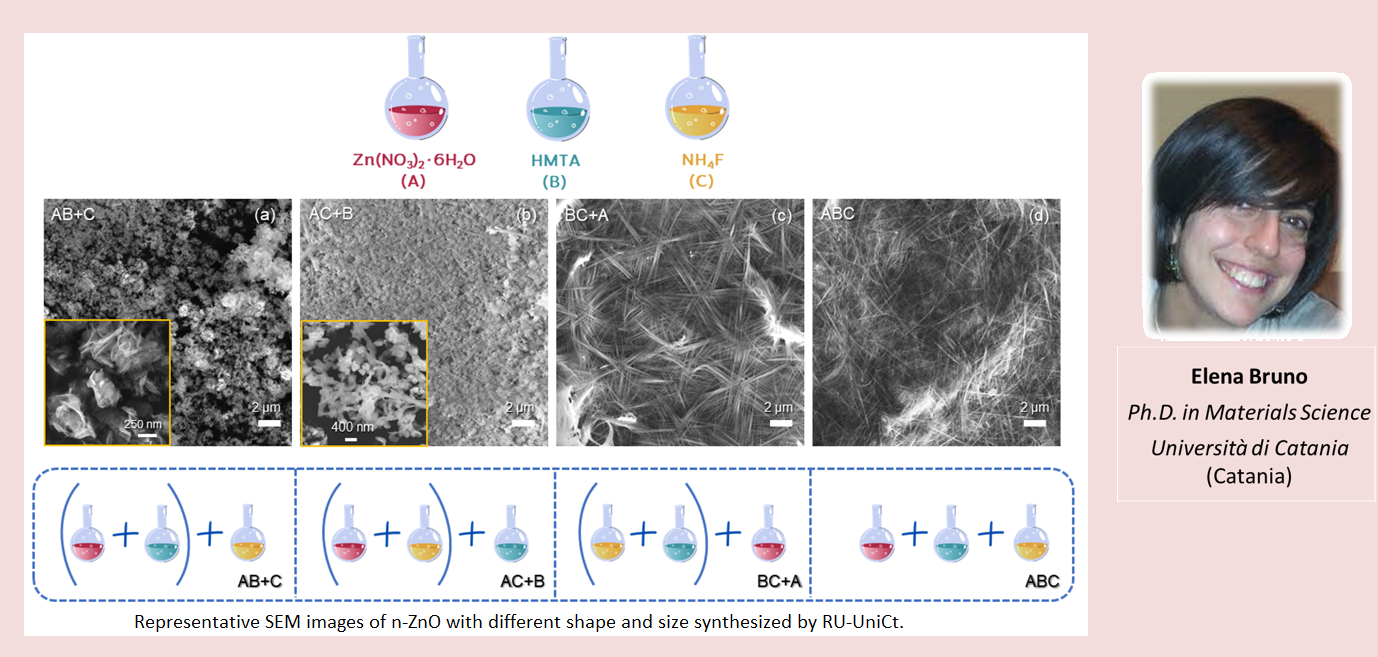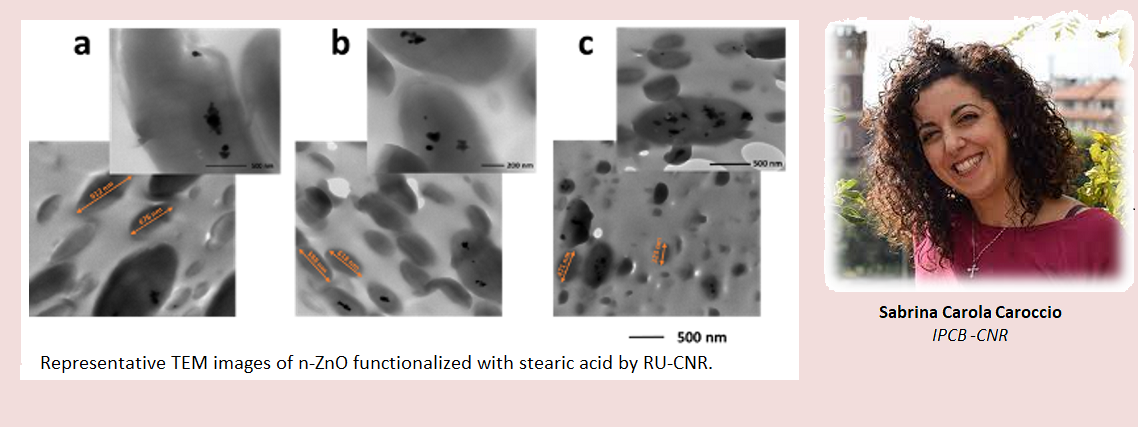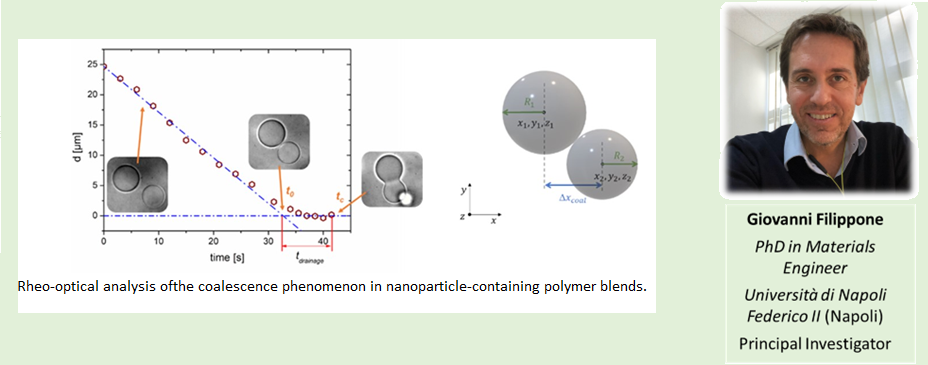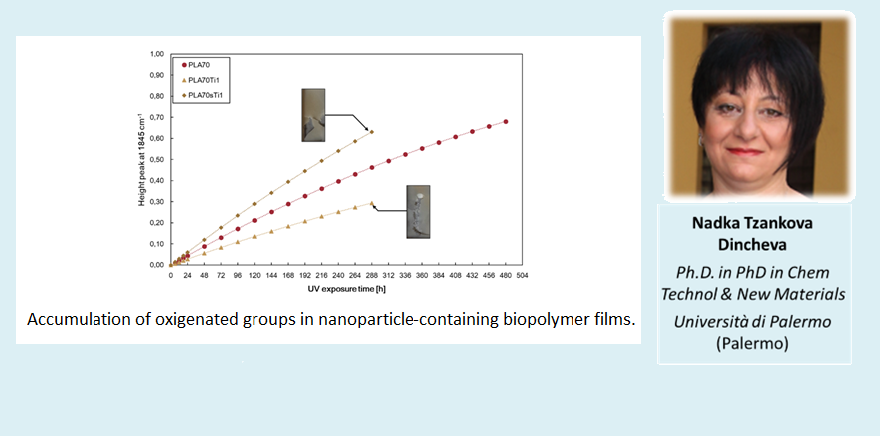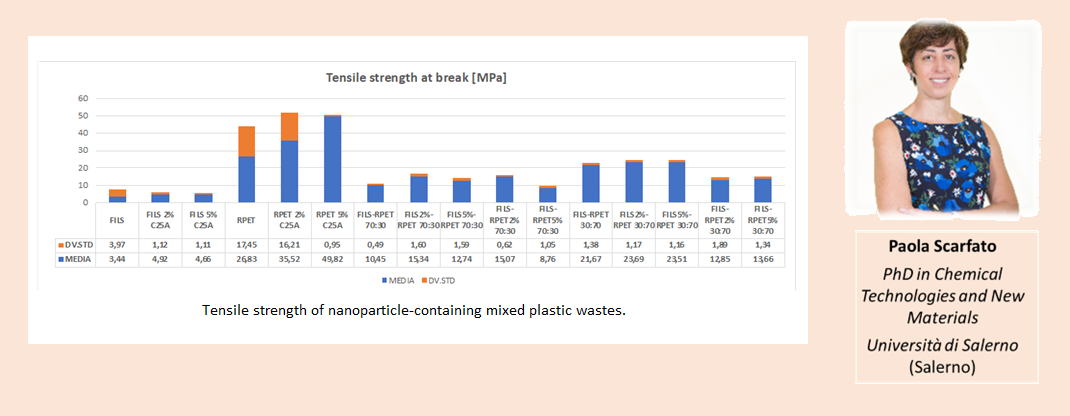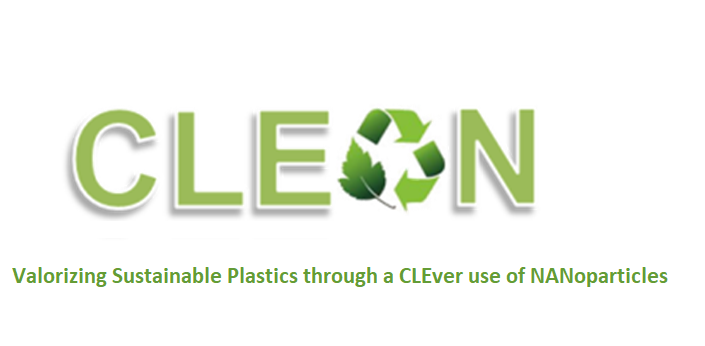
CLEAN
CLEAN is a project funded by the Italian Ministry of University and Research (MUR) in the framework of the call PRIN: Progetti di Ricerca di Rilevante Interesse Nazionale («Research Projects of Relevant National Interest»)
CLEAN aims at providing sustainable alternatives to ubiquitous petroleum-based plastics through an innovative use of nanoparticles, which are used as a clever tool for manipulating the microstructure and, through it, the properties of blends of bio-based polymers and/or recycled plastics.
CLEAN proves that a clever nanoparticle-assisted materials design can lead to green formulations able to compete with petroleum-based plastics in terms of costs and properties.
Clean Project

CLEAN - Valorizing Sustainable Plastics through a CLEver use of NANoparticles
CLEAN is a project funded by the Italian Ministry of University and Research (MUR) in the framework of the call PRIN: Progetti di Ricerca di Rilevante Interesse Nazionale («Research Projects of Relevant National Interest»)
CLEAN aims at providing sustainable alternatives to ubiquitous petroleum-based plastics through an innovative use of nanoparticles, which are used as a clever tool for manipulating the microstructure and, through it, the properties of blends of bio-based polymers and/or recycled plastics.
CLEAN proves that a clever nanoparticle-assisted materials design can lead to green formulations able to compete with petroleum-based plastics in terms of costs and properties.

Rather than using nanoparticles or blending polymers, CLEAN combines nanoparticles and polymer blending, looking for synergic effects.

To obtain blends with a prescribed morphology and, hence, with a desired set of properties, a multi-scale approach is strictly needed to bridge the gap between the micro- and macro-scale.
Main Activities

CLEAN - Main activities
- Synthesis and Modification of Nanoparticles (NPs).
The Research Unit (RU) UniCt and CNR worked on the synthesis of nanostructures of metallic oxides, such as ZnO, using the Chemical Bath Deposition (CBD) technique. UniCt also collaborated with other units in the morphological characterization of NPs and polymer nanocomposite blends. The RU-CNR worked on the surface modification of ZnO nanoparticles and conducted studies on the characterization of polymer nanocomposites loaded with various nanoparticles and examined the effects of temperature, seawater degradation, and UV exposure.
read more - Rheo-optical Analysis.
The RU-UniNa performed rheo-optical analyses to shed light on the basic mechanisms of breakup, shape relaxation and coalescence responsible for the microstructural evolutions of polymer blends during flow. The research extended to industrially relevant materials, including blends with layered silicates, proving the scalability of the approaches of CLEAN.
read more - Blends of Bioderived/Biodegradable Polymers.
The RU-UniPa focused on preparing blends of biopolymers with metallic oxide nanoparticles, examining their effects on mechanical strength and degradation.
read more - Blends of Recycled Polymers.
The RU-UniSa explored the use of nanoparticles to enhance the performance of recycled polymer blends from post-consumer urban collection. They utilized organo-modified lamellar silicates and analyzed the thermal, mechanical, and morphological properties of the blends.
read more
Team

CLEAN’s research team
The inherent complexity of the materials of interest explains the involvement of a multidisciplinary research team composed of Material Scientists, Engineers, Polymer Chemists and Physicists
- Giovanni Filippone - PhD in Materials Engineer - Università di Napoli Federico II (Napoli) - Principal Investigator;
- Elena Bruno - Ph.D. in Materials Science - Università di Catania (Catania);
- Nadka Tzankova Dincheva - Ph.D. in PhD in Chem Technol & New Materials - Università di Palermo (Palermo);
- Sabrina Carola Caroccio - Ph.D. in Chemistry - Istituto per i Polimeri, Compositi e Biomateriali del Consiglio Nazionale delle Ricerche (Catania);
- Paola Scarfato - PhD in Chemical Technologies and New Materials - Università di Salerno (Salerno)
Publications

List of publications produced by the CLEAN’s Research Team
- S. C. Carroccio, P. Scarfato, E. Bruno, P. Aprea, N. Tz. Dintcheva, & G. Filippone
Impact of nanoparticles on the environmental sustainability of polymer nanocomposites based on bioplastics or recycled plastics–A review of life-cycle assessment studies
Journal of Cleaner Production 2022, 335, 130322 - A. Marotta, A. Causa, M. Salzano de Luna, V. Ambrogi, & G. Filippone
Tuning the Morphology of HDPE/PP/PET Ternary Blends by Nanoparticles: A Simple Way to Improve the Performance of Mixed Recycled Plastics
Polymers 2022, 14(24), 5390 - R. Puglisi, A. A. Scamporrino, N. Tz. Dintcheva, G. Filippone, E. Bruno, P. Scarfato, P. Cerruti & S. C. Carroccio
Photo- and Water-Degradation Phenomena of ZnO Bio-Blend Based on Poly(lactic acid) and Polyamide 11
Polymers 2023, 15(6), 1434 - A. R. de Matos Costa, A. Crocitti, L. Hecker de Carvalho, S. C. Carroccio, P. Cerruti & G. Santagata
Properties of Biodegradable Films Based on Poly(butylene Succinate) (PBS) and Poly(butylene Adipate-co-Terephthalate) (PBAT) Blends
Polymers 2020, 12(10), 2317 - M. Ussia, G. Curcuruto, D. Zampino, N. Tz. Dintcheva, G. Filippone, R. Mendichi & S. C. Carroccio
Role of Organo-Modifier and Metal Impurities of Commercial Nanoclays in the Photo- and Thermo-Oxidation of Polyamide 11 Nanocomposites
Polymers 2020, 12(5), 1034 - E. Morici, S.C. Carroccio, E. Bruno, P. Scarfato, G. Filippone, N.Tz. Dintcheva
Recycled (bio)plastics and (bio)plastic composites: a trade opportunity in a green future
Polymers, 14, 2038 (2022) - R. Ferraioli, L. Di Maio, L. Incarnato, P. Scarfato
Development of recycled blown films based on post-consumer plastics recovered from seas and rivers
Chemical Engineering Transactions, 86 433-438 - R. Ferraioli, L. Incarnato, L. Di Maio, P. Scarfato
A preliminary study on recyclability of mixed plastic wastes recovered from urban collection
Key Engineering Materials, 885, 109-114 - Di Mari G.M., Mineo G., Franzò G., Mirabella S., Bruno E., Strano V.
Low-Cost, High-Yield ZnO Nanostars Synthesis for Pseudocapacitor Applications
Nanomaterials 2022, 12, 2588 - Di Mari G. M., Spadaro M. C., Salutari F., Arbiol J., Bruno L., Mineo G., ... & Mirabella S.
Low-Cost, High-Yield Zinc Oxide-Based Nanostars for Alkaline Overall Water Splitting
ACS omega 2023, 8(40), 37023-37031 - Mineo G., Bruno E. & Mirabella S.
Advances in WO3-Based Supercapacitors: State-of-the-Art Research and Future Perspectives
Nanomaterials 2023, 13(8), 1418 - Mineo G., Scuderi M., Pezzotti Escobar G., Mirabella S. & Bruno E.
Engineering of Nanostructured WO3 Powders for Asymmetric Supercapacitors
Nanomaterials 2022, 12(23), 4168 - Mineo G., Bruno L., Bruno E. & Mirabella S.
WO3 Nanorods Decorated with Very Small Amount of Pt for Effective Hydrogen Evolution Reaction
Nanomaterials 2023, 13(6), 1071 - Mineo G., Moulaee K., Neri G., Mirabella S. & Bruno E.
Mechanism of Fast NO Response in a WO3-Nanorod-Based Gas Sensor
Chemosensors 2022, 10(11), 492 - Mineo G., Scuderi M., Bruno E. & Mirabella S.
Engineering hexagonal/monoclinic WO3 phase junctions for improved electrochemical hydrogen evolution reaction
ACS Applied Energy Materials 2022, 5(8), 9702-9710 - Mineo G., Moulaee K., Neri G., Mirabella S. & Bruno E.
H2 detection mechanism in chemoresistive sensor based on low-cost synthesized WO3 nanorods
Sensors and Actuators B: Chemical 2021, 348, 130704 - Mineo G., Ruffino F., Mirabella S. & Bruno E.
Investigation of WO3 electrodeposition leading to nanostructured thin films
Nanomaterials 2020, 10(8), 1493

